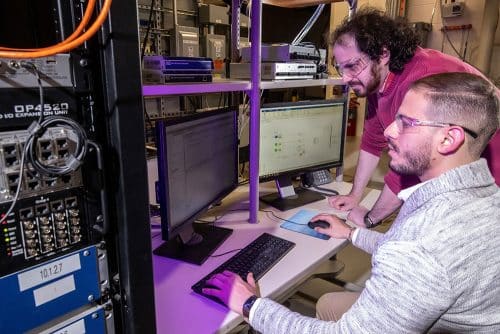Sandia National Laboratories is known for creating reliable and resilient microgrids for military outposts and key metropolitan services. Sandia physicists are currently working with NASA on one for the moon.
Sandia has already worked with NASA to power lunar equipment. According to Jack Flicker, a Sandia electrical engineer, NASA’s planned Artemis lunar colony will serve as a technology proving ground for eventual human exploration of Mars. The base camp idea includes a living unit with space for up to four astronauts, as well as the possibility of independent mining and fuel processing facilities, known as in-situ resource utilisation. The mining and processing facilities might provide rocket fuel, water, oxygen, and other resources needed for extended lunar surface exploration while reducing Earth’s supply needs.

“There are some very important differences between something like an ISS-type microgrid to something that has the extent of a moon base,” Flicker said. “One of those differences is the geographic size, which can be problematic, especially when running at low DC voltages. Another is that when you start to extend these systems, there will be a lot more power electronics as well as a lot more distributed energy resources that will exist throughout the base. Sandia has been looking at microgrids with a lot of distributed energy resources for quite a long time.”
The Sandia team is creating an electrical system controller for the mining and processing center’s microgrid. The team includes electrical engineer Lee Raskin and control engineer Dave Wilson. According to Flicker, NASA is designing the electrical system controller for the habitation unit because the system will be quite similar to the direct-current electrical system on the International Space Station. Flicker and his colleagues are working on the technology that will connect the two microgrids, as well as the power flow and operation between them.
“Our goal is to come up with a lunar energy power management system that can efficiently maintain a level system on all those timescales,” Wilson said. “We’ve got a specialized Secure Scalable Microgrid facility and control-system-design methodology that analyzes this. The facility also has specialized energy storage emulators that can help us determine the specifications for how much energy storage the base needs and their requirements.”
The experts at Sandia are also working on a system that will link the mining facility and habitation unit microgrids for resiliency and robustness. In a microgrid, there are two main techniques to achieve resiliency. One is the capacity to route power flexibly where it is required. The other option is to oversize everything to ensure that adequate power is available even if numerous components fail.
“Usually, we have some combination of those two, where it’s oversized to some extent, but you are also able to flexibly route power how you need to within a microgrid, or between independent yet cooperative microgrids like we’re exploring for the moon,” Flicker said. “In a contingency event such as an energy storage system failing during an eclipse, we want to be able to port the power at the mining facility over to the base camp to keep astronauts safe.”






